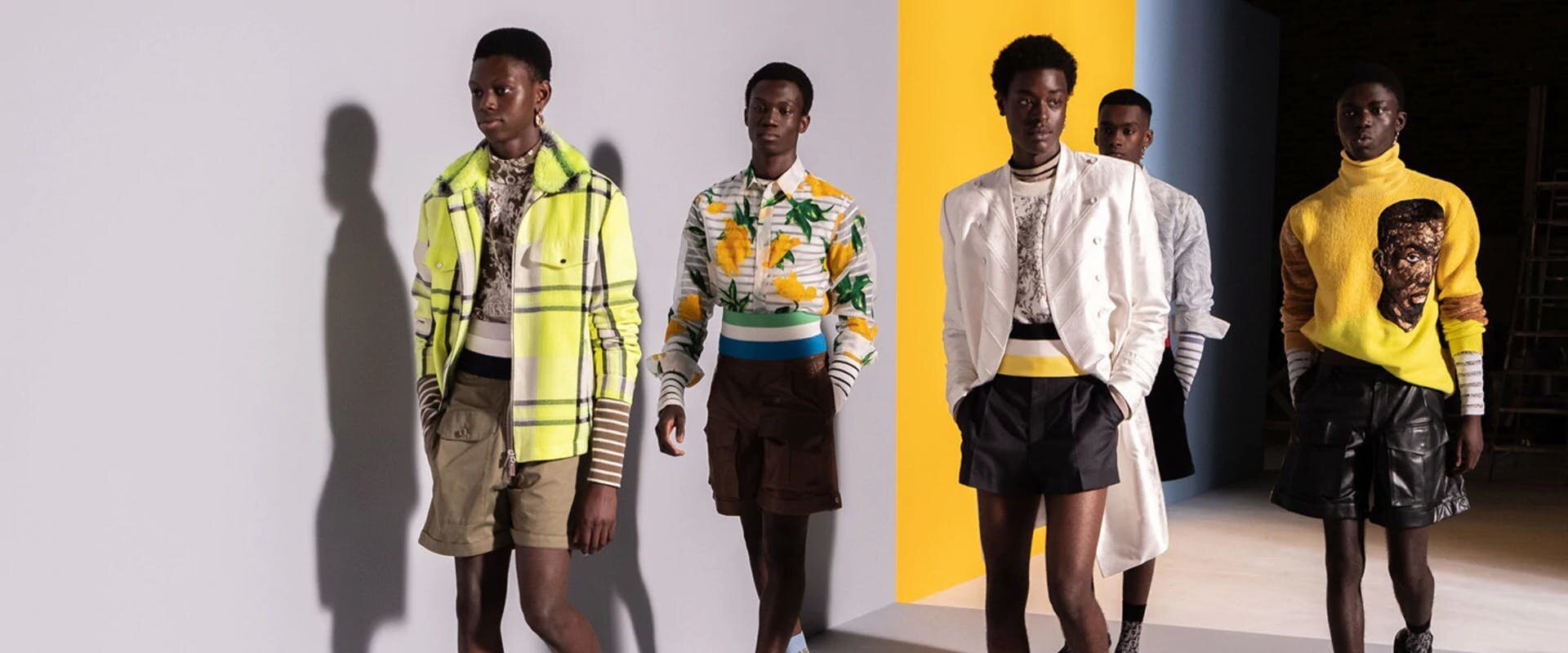An Ode to Diversity and Craft through the Eyes of Fashion
Recently, I’ve been watching the digital fashion week nonstop - so addicted that I even registered a new Instagram account that exclusively follows all the brand names I love. These brilliant fashion shows are like the modern art exhibitions at the museums I missed so dearly, drawing me in like a magnet. At the trying time of a pandemic, all of the most tender emotions were expressed through the form of fashion - reminding us about the boundlessness of art and the temperature of craft.
Below are a few shows I’m super impressed with:
Dior Men’s collection collaborating with African artist Amoako Boafo:
Kim Jones, Dior Men’s creative director, grew up in Africa and has always wanted to collaborate with an African artist. He encountered Amoako, a Ghanian portrait artist last year, and fell in love with the vibrant colors and style on the African people in the artist’s paintings. One ivy pattern he drew on a portrait even resembles a previous Dior couture print - a sign the brand and the art would combine well.
The characters in Amoako’s paintings are like the normal people you see on the street - they could be engineers, journalists, artists, or nurses, except they all have an enormous sense of style. Dark skin tones really make bright colors pop on them, highlighting a red turban, a baby pink suit, or sunflowers on a white shirt. You don’t see strong emotions in these people, but they all look at ease - as if they are lounging at a friend’s casual dinner party. You want to be among them.
It is marvelous to see how Amoako paints, in the video below, using just his fingers dubbed with paints and no painting brushes. It allows him to express himself in a way that is more raw and authentic, kind of like how a child paints. The texture was then translated into Dior Men’s collection using knits, draping and embroidery.
Meanwhile, this collection is a reiteration of the recent gender fluidity trend - in which men’s style is becoming increasingly less monotonic. Bold colors are used instead of the neutral black, white, brown and blue, and traditionally feminine prints were employed onto menswear. The touch of femininity through the floral patterns and the vintage golden earrings give the Dior boys a sense of subtlety, vulnerability, romanticism, emotion and empathy. Suddenly, they seem much more powerful and complex than a mucho macho man.
Amoako’s stylish portraitures thus came alive on a full house of black models, here at Dior.
JW Anderson X Tom of Finland (Capsule Collection)
While this season’s Dior men’s collection combines cultures, the JW Anderson collaboration with Tom of Finland pays tribute to the gay community. Tom of Finland was an illustrator in the 1950s who changed the queer culture by celebrating gay masculinity through his drawings - something way ahead of his time. Inspired by his art, JW Anderson’s Collection was born, drawing connection between the inner core of the artist and the brand.
In a sense, they both believe in the power of being themselves, and of whatever they believe in, no matter which time period they are in.
Loewe’s “Show in a Box”
The same Jonathan Anderson from JW Anderson (yes, he is the creative director of two brands) also showcased a temperature of craftsmanship through his Spanish brand Loewe.
Before putting out his marketing campaigns online, Jonathan Anderson mailed a physical box to the fashion insiders who would normally attend his real-life fashion show pre-Covid. The box includes all of the basic elements you would see in a show - a paper stage setting, fabric swatches, show notes, and even a vinyl CD with background music that can be played on a cardboard turntable.
The idea is to give something more physical, tangible, an idea of craft that is made by hand and felt by hand. “We have started to learn over the period of quietness and reflection to use our hands, to express ourselves, to make bread, to knit or do gardening.” said the designer.
What Loewe touched upon here is quite valuable. The craving of human touch, of artisanship, instead of things robotically made by machines, is being appreciated again in our time. When people are baking banana bread themselves instead of eating factory-made processed food, when people are forced to work out among the grass and the trees instead of sweating on workout machines, they are reconnecting with the nature, the community and themselves. They want to feel again. And similarly, they hope to have it translated into their fashion - something that carries more emotions, something that reminds you of the sweater your grandma knitted for you.
And in the pandemic year, we are seeing a revival of craftsmanship and a celebration of diversity. When we are more connected to the greater community, to the earth, and to our own heart, we need to find back the things that have been missing for so long in our previous fast turning, dizzy world.
Lastly, here is a brand I recently discovered from Guizhou, China. Disillusioned by the pollution and waste that the fashion industry creates, designer Angel Chang moved from New York to a small village at Guizhou, where she seeks to revive an old all-natural fabric and dying technique through the crafts of the Miao ethnic villagers. They make everything using only the sun, water, plants and their hands, with no chemicals or electricity. The end product reminds you of the breeze on your face when you’re walking through a forest in the spring.
Such a poetic move, I constantly dream about going back to China and be her intern.
All images and videos courtesy of brand websites and campaigns.
























